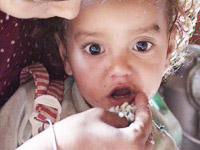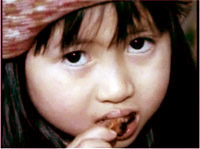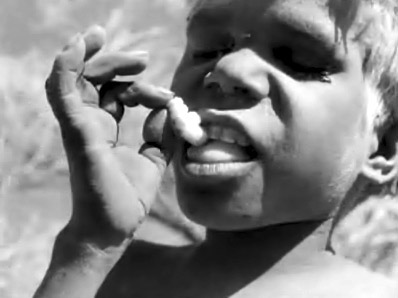- A Honey of a Story: Brief history of bees and honey -- Vaughn M. Bryant Jr., Palynology Laboratory, Texas A&M University
- Ancient Beehives Yield 3,000-Year-Old Bees -- Wired (07 June 2010)
- Ancient Cave Painting -- Kirsten Traynor, MD Bee
- APISERVICES
- The Bee -- Andrew Gough
- Bee-Keeping -- andré dollinger
- The Bee Photographer -- Éric Tourneret
- Bees, honey and health in antiquity -- The Free Library by Farlex (01 January 2008)
- Bees in Art -- marinbees.com
- Bees in Spain /Beekeeping in Spain -- Iberianature
- Bees in the [Mayan] Codices -- MayaLords
- Bee Source
- The Bee Works
- Beekeeping and Sustainable Livelihoods, Food and Agriculture Organization of the United Nations
- Breakthrough in bee mite battle -- BBCNews (22 December 2011)
- A Brief History of Honey -- The Honey Association
- .
- The Buzz in Mexico -- Melina Gerosa Bellows, National Geographic Traveller (January/Februaryu 2012)
- Crane, Eva. The Archaeology of Beekeeping. Ithaca: Cornelll University Press, 1983.
- Crane, Eva. The World History of Beekeeping and Honey Hunting. London: Routledge, 1999.
- .
- Eight ancient drinks uncorked by science -- msnbc (15 December 2009)
- Ethiopia: Stuck on Honey -- BBC (16 March 2000)
- Ethnohistory of the stingless bees Melipona beecheii (Hymenoptera: Meliponinae) in the Mayan Civilization, decipherment of the Beekeeping Almanacs part I in the "Madrid Codex" and the study of their behavioral traits and division of labor -- Lopez-Maldonado, Julio Edgar, Ph.D. Dissertation, University of California, Davis, 2010, 242 pages; AAT 3429563 <http://proquest.umi.com/pqdlink?did=2188879851&Fmt=7&clientI d=79356&RQT=309&VName=PQD>
- Foreign Honey Oozes In -- Houston Chronicle (16 May 2010)
- Freemasonry & bees -- Grand Lodge of British Columbia and Yukon
- Gathering portrayed in Paleolithic art -- Cryptoforestry (20 January 2012)
- Harnessing honey's healing power -- Angie Knox, BBCNews (08 June 2004)
- Himalaya Honey Hunters Cling to Cliffside Tradition -- National Geographic (14 April 2004)
- Health Benefits of Honey -- honey-health
 Historical Uses of Honey as Food (47:50) -- UCtelevision (03 November 2011) Historical Uses of Honey as Food (47:50) -- UCtelevision (03 November 2011)
- The History of Maya Beekeeping -- Cozumel Mexico
- Honey -- Wikibooks Cookbook
- Honey and History -- gousiaris.gr
- Honey as an Antimicrobial Agent -- Honey Research Unit, Waikato University
- Honey Bee Mystery -- National Geographic Kids (2 September 2008)
- Honey Composition and Properties -- J. W. WHITE, JR., AND LANDIS W. DONER, BEEsource
- Honey from Folklore to Marvel -- History of Medicine, Hamad Medical Corporation
- Honey history -- About.com
- The Honey Hunters -- Softpedia
- Honey Love: Urban Beekeepers
- Honey Traveler: Everything in the world about honey
- Honey varieties with pictures
- How Bees Work -- howstuffworks
- Humans, the Honey Hunters -- Smithsonian (19 December 2011)
- Islam and Pollinators -- ARC Alliance of Religion and Conservation
- Kirk, William D. J. 2021. “Is It Honey Bee or Honeybee? Bumble Bee or Bumblebee? Who Decides the Common Names of Bees?” Bee World 99 (2): 38–39. doi:10.1080/0005772X.2021.1982315.
- Mason bee -- Wikipedia
- Mazar, Amihai, and Nava Panitz-Cohen. “It Is the Land of Honey: Beekeeping at Tel Rehov." Near Eastern Archaeology, Volume 70, Number 4, December 2007, pp. 202-219.
- Michigan Beekeepers' Association 2009 Calendars [images]
- Mid-Atlantic Apiculture Research and Extension Consortium (MAAREC)
- Nepal’s honey hunters -- Gabriella Le Breton, Telegraph (6 June 2010)
- Opportunistic HoneyHunting among HunterGatherers -- 78 Steps Health Journal (16 September 2011)
- Pollinators -- National Park Service
- Post-colony collapse disorder, bees receive a helping hand in cities -- Scout Report, 25 September 2009, Volume 15, Number 38
- Ransome, Hilda M. The Sacred Bee in Ancient Times and Folklore. London: George Allen & Unwin, 1937 [Mineola, NY: Dover, 2004].
- Recognising the economic benefits of nature in 2011 -- BBCNews (09 January 2011)
- Report: Georgia Unearths the World’s Oldest Honey -- Giorgi Lomsadze, EURASIANET.org (30 March 2012)
- Seales, Rebecca. Just buzz-ness as usual... Fearless Nepalese honey hunters scale 250 ft cliffs in pursuit of their prize - while under attack from the world's largest bees. MailOnline, 28 May 2012. Accessed 25 August 2013. http://www.dailymail.co.uk/news/article-2151002/Just-buzz-ness-usual--Fearless-Nepalese-honey-hunters-scale-250ft-cliffs-pursuit-prize--attack-worlds-largest-bees.html.
- The-Stingless-Bees -- flizoo
- Sweet as Honey -- TipKing
- Toussaint-Samat, Maguelonne. A History of Food. Chichester, UK: John Wiley & Sons/Blackwell 2009.
- U.S. National Honey Board
- Valli, Eric, and Diane Summers. Honey Hunters of Nepal. NY: Harry N. Abrams, 1988.
.
- Value-Added Products From Beekeeping, Food and Agriculture Organization of the United Nations
- Why Honey Is Eaten for Rosh Hashanah, and Other Burning Questions -- Lisa Bramen, The Smithsonian Magazine (18 September 2009)
|

Mesolithic Honey gatherer, La Araña Cave, near Bicorp, Valencia, Spain
ca. 7,000 B.C.
Wikipedia


"Preparation of Medicine from Honey"
Leaf from an Arabic translation of the
Materia Medica of Dioscorides
(A.D. 1225 Baghdad, Iraq)

A bee visiting a lupine flower in the springtime. The orange wad of pollen in the bee's pollen basket is from the flowers.
howstuffworks

Worker bees filling and sealing honey combs
Wikipedia
|







